Least Weasel
- March 19, 2024
- 0 comment
Least Weasel, scientifically known as Mustela nivalis, is a small yet intriguing member of the mustelid family, which includes ferrets, otters, and badgers. Measuring just 7 to 8 inches in length with an additional 2 to 3 inches added by its tail, this tiny predator weighs between 1 to 2 ounces, making it one of the smallest carnivores in the world. What sets the Least Weasel apart is its remarkable adaptability and hunting prowess. Found across a diverse range of habitats spanning Europe, Asia, and North America, these elusive creatures boast a seasonal coat that transitions from pristine white in winter to brownish hues in summer, aiding in camouflage.
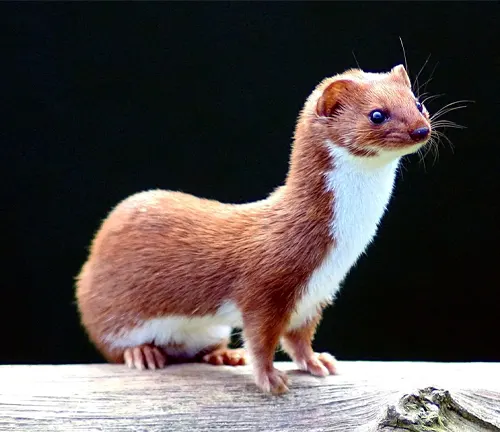
Despite their diminutive size, Least Weasels are formidable hunters, preying primarily on small mammals like voles, mice, and shrews. Their slender bodies and lightning-fast reflexes enable them to navigate through dense vegetation and tight spaces with ease. Though often unseen, the impact of the Least Weasel on its ecosystem is significant, both as a predator and prey species. This enigmatic creature continues to captivate wildlife enthusiasts with its agility, resilience, and elusive nature.
| Specification | Description |
|---|---|
| Scientific Name | Mustela nivalis |
| Family | Mustelidae |
| Average Length | 7 to 8 inches |
| Tail Length | 2 to 3 inches |
| Average Weight | 1 to 2 ounces |
| Habitat | Wide range including grasslands, woodlands, urban areas |
| Distribution | Europe, Asia, North America |
| Coat Color | Seasonal: White in winter, Brown in summer |
| Primary Diet | Small mammals such as voles, mice, shrews |
| Predatory Behavior | Agile, skilled hunter; employs stalking, pouncing, and chasing techniques |
| Lifespan | Typically 1 to 2 years in the wild |
| Conservation Status | Least Concern |
The Least Weasel (Mustela nivalis), also known simply as the weasel, is the smallest member of the mustelid family, which includes ferrets, otters, and badgers. Despite its tiny stature, this carnivorous mammal possesses a formidable reputation as a skilled predator.
Habitat and Distribution
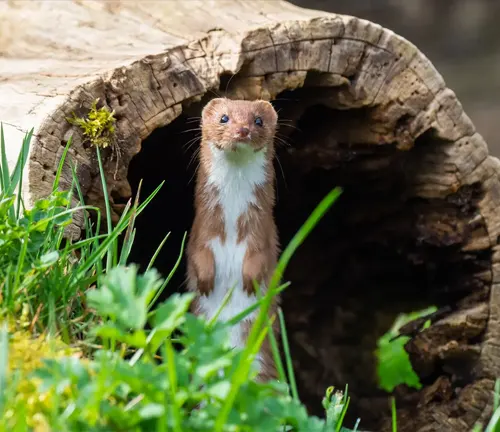

Least weasels (Mustela nivalis) are adaptable creatures found across a diverse range of habitats spanning Europe, Asia, and North America. They inhabit various ecosystems, including grasslands, woodlands, marshes, and even urban areas. Their ability to thrive in different environments reflects their resilience and resourcefulness. Whether in lowland regions or mountainous terrain, least weasels can be found hunting for prey and navigating through their surroundings with agility and precision. Despite their small size, these elusive predators have a wide distribution, making them a fascinating subject of study for wildlife enthusiasts and researchers alike.
Physical Characteristics
Size and Weight
Least weasels are among the smallest carnivores in the world, measuring just 7 to 8 inches in length, excluding their tail. Their slender bodies contribute to their diminutive appearance, with males and females being relatively similar in size. Typically, least weasels weigh between 1 to 2 ounces, making them exceptionally light creatures. Despite their small stature, they possess remarkable agility and speed, enabling them to navigate through narrow spaces and pursue prey with precision.

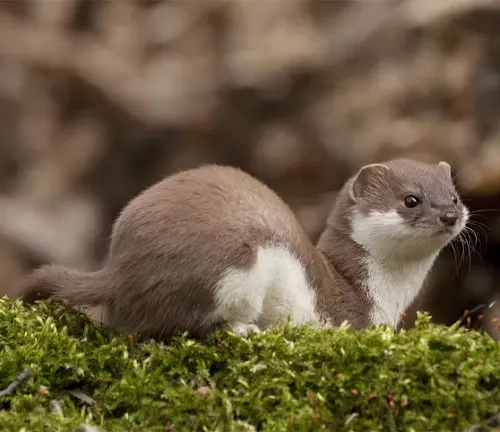
Coat Coloration
One of the most striking features of least weasels is their seasonal coat coloration. During the winter months, their fur transitions to a pristine white color, providing effective camouflage in snowy environments. This adaptation allows them to blend seamlessly into their surroundings, making them less conspicuous to both prey and predators. In contrast, during the summer season, their fur adopts a brownish hue, matching the coloration of the vegetation. This seasonal change in coat color helps least weasels remain inconspicuous and adapt to varying environmental conditions throughout the year.
Behavior and Diet
Hunting Techniques
Least weasels are skilled hunters known for their agility and cunning tactics. They employ a variety of hunting techniques to capture their prey efficiently. One of their primary methods is stalking, where they stealthily approach their target, keeping low to the ground and using cover to remain undetected. Once in striking range, least weasels rely on their remarkable speed and agility to launch sudden attacks, pouncing on their prey with precision and speed. They also utilize chasing techniques, pursuing prey over short distances with remarkable swiftness. In addition, least weasels are adept at navigating through narrow burrows and crevices, allowing them to hunt small mammals in their underground habitats. Overall, their combination of stealth, speed, and agility makes them highly effective predators in their ecosystems.


Prey Preference
Least weasels are opportunistic predators with a diverse diet, but they primarily prey on small mammals. Their preferred prey includes voles, mice, shrews, and other rodents that inhabit their habitat. Due to their small size and agile hunting techniques, least weasels can pursue prey into tight spaces, such as burrows and dense vegetation, where larger predators may struggle to follow. This versatility in hunting enables them to exploit a wide range of habitats and prey species. While small mammals constitute the majority of their diet, least weasels may also consume birds, eggs, insects, and occasionally carrion when available. Their ability to adapt their diet to local prey availability contributes to their success as predators in various ecosystems.
Reproduction and Life Cycle
Mating Habits
Least weasels exhibit unique mating behaviors, particularly during the breeding season. Mating typically occurs in the spring, triggered by environmental cues such as increasing daylight hours and warmer temperatures. During this time, male least weasels become more active in seeking out potential mates. They engage in elaborate courtship displays, including chasing and play-fighting with female counterparts. Dominance hierarchies may also form among males, with competition for access to females being fierce. Once a pair has mated, the male typically leaves the female to care for the offspring on her own.
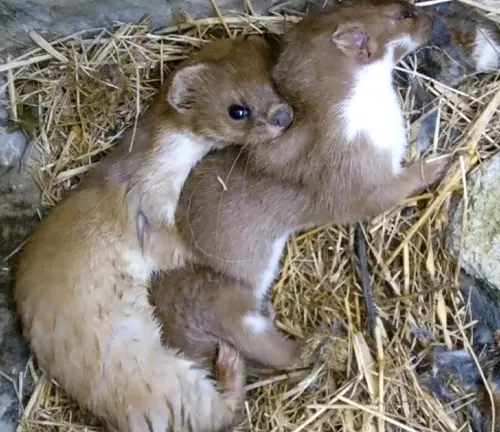

Gestation Period
After mating, female least weasels undergo a relatively short gestation period of approximately 35 days. During this time, the developing embryos are nourished within the mother’s womb until they are ready to be born. The short gestation period allows least weasels to produce multiple litters throughout the breeding season, maximizing their reproductive success. Once the gestation period is complete, the female gives birth to a litter of typically 4 to 6 kits, although litter size can vary depending on factors such as maternal health and environmental conditions.
Rearing of Young
The responsibility of rearing the young falls primarily on the female least weasel. After giving birth, the mother diligently cares for her offspring, providing them with warmth, protection, and nourishment. The newborn kits are born blind, hairless, and entirely dependent on their mother for survival. They rely on her milk for nutrition during the first few weeks of life. As the kits grow, the mother gradually introduces them to solid food, teaching them essential hunting skills through play and observation. By the age of 8 weeks, the young least weasels are typically weaned and ready to venture out on their own, although they may continue to stay with their mother for a short period before becoming independent. Throughout this process, the mother remains vigilant in ensuring the safety and well-being of her offspring, preparing them for life as self-sufficient predators in the wild.

Adaptations for Survival
Camouflage
Least weasels possess remarkable camouflage adaptations that aid in their survival in diverse habitats. One of the most notable features of their camouflage is their seasonal coat coloration. During the winter months, when their environment is blanketed in snow, least weasels molt their fur to a pristine white color, effectively blending into the snowy landscape. This white coat provides them with excellent camouflage, making them less visible to both prey and predators. In contrast, during the summer season, their fur adopts a brownish hue, allowing them to blend into the surrounding vegetation. This ability to change coat coloration helps least weasels remain inconspicuous and adapt to different environmental conditions throughout the year, enhancing their chances of survival.
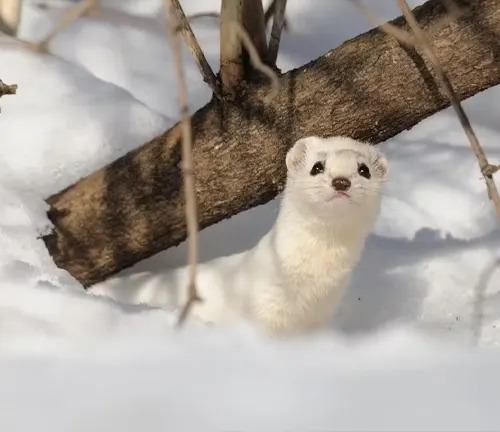
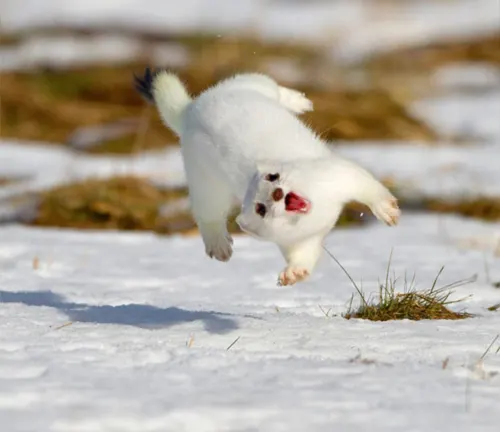
Agility and Speed
Least weasels are renowned for their agility and exceptional speed, which are critical attributes for their survival as predators. With their slender bodies and powerful leg muscles, least weasels possess remarkable agility, enabling them to navigate through dense vegetation, narrow burrows, and tight spaces with ease. This agility allows them to pursue prey with precision and efficiency, often darting in and out of cover to surprise their targets. Additionally, least weasels are incredibly fast runners, capable of reaching speeds of up to 10 miles per hour (16 kilometers per hour) in short bursts. This speed is essential for chasing down agile prey such as mice and voles, ensuring their success as hunters. Combined with their keen senses and stealthy approach, the agility and speed of least weasels make them formidable predators in their ecosystems, capable of outmaneuvering larger prey and evading potential threats with ease.
Interactions with Humans
Impact on Agriculture
The presence of least weasels in agricultural areas can have both positive and negative impacts on farming practices. On one hand, least weasels play a crucial role in controlling rodent populations, including common agricultural pests such as mice and voles. By preying on these rodents, least weasels help reduce crop damage and losses caused by rodent infestations, thereby benefiting farmers. Their role as natural pest controllers can contribute to sustainable agricultural practices by minimizing the need for chemical pesticides.
However, least weasels can also pose challenges for farmers, particularly in livestock operations. While least weasels primarily target small mammals as prey, they may occasionally prey on young poultry or small livestock, such as chicks or rabbits. This predation can result in economic losses for farmers and impact livestock production. Additionally, least weasels may occasionally enter buildings or storage facilities in search of prey, potentially causing damage to property or stored agricultural products.
Cultural Significance
Throughout history, least weasels have held cultural significance in various societies and folklore traditions around the world. In many cultures, they are associated with traits such as agility, cunning, and stealth, often depicted as symbols of wit and resourcefulness. In some indigenous cultures, least weasels are revered as spiritual or totemic animals, believed to possess supernatural powers or wisdom.
In folklore and mythology, least weasels often appear as characters in stories, fables, and legends, representing both positive and negative attributes. They may be portrayed as clever tricksters or cunning predators, capable of outsmarting larger and more powerful adversaries. In some cultures, least weasels are featured in folk tales and nursery rhymes, where they play roles ranging from mischievous companions to fearsome adversaries.
In addition to their symbolic significance, least weasels have also influenced cultural practices and traditions in certain regions. For example, in some rural communities, least weasels may be associated with superstitions or beliefs related to luck, protection, or fertility.
Conservation Status
Threats to Population

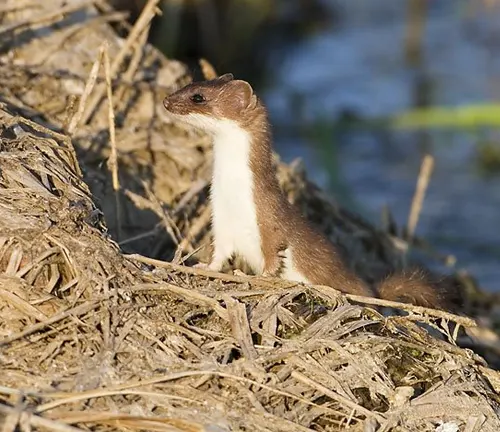
Despite their widespread distribution, least weasels face several threats to their population stability and long-term survival. Habitat loss and fragmentation represent significant challenges for least weasels, as urbanization, agricultural expansion, and land development encroach upon their natural habitats. The conversion of natural habitats into agricultural fields, urban areas, and industrial zones reduces the availability of suitable habitat for least weasels, limiting their range and dispersal opportunities.
In addition to habitat loss, least weasels are vulnerable to human-induced disturbances and environmental degradation. Pollution, including pesticides and chemical contaminants, can negatively impact least weasel populations by reducing prey availability, contaminating food sources, and affecting reproductive success. Climate change poses further threats, altering habitat conditions, disrupting prey populations, and increasing the frequency and severity of extreme weather events.
Predation by introduced species, such as feral cats and domestic dogs, also poses a threat to least weasel populations, particularly in areas where these predators have been introduced and have few natural enemies. Disease outbreaks, including those transmitted by domestic animals or other wildlife species, can further exacerbate population declines among least weasels.
Conservation Efforts
Conservation efforts aimed at protecting least weasels and their habitats are essential for ensuring their long-term survival and ecological significance. These efforts encompass various strategies and initiatives aimed at mitigating threats and promoting population recovery. Habitat conservation and restoration play a central role in least weasel conservation, focusing on preserving key habitats, creating wildlife corridors, and restoring degraded ecosystems to provide suitable habitat for least weasels and other wildlife species.
Management of human-wildlife conflicts is another important aspect of least weasel conservation, involving measures to reduce conflicts between least weasels and human activities, such as agriculture, urban development, and infrastructure projects. This may include implementing non-lethal methods of pest control, enhancing habitat connectivity, and promoting coexistence between least weasels and local communities.
Research and monitoring efforts are essential for understanding least weasel ecology, population dynamics, and distribution patterns, providing valuable data for informing conservation decisions and management strategies. Collaborative partnerships between government agencies, conservation organizations, researchers, and local communities are crucial for implementing effective conservation measures and fostering stewardship of least weasel habitats.
Different Species
Siberian Weasel
(Mustela sibirica)
Found in parts of Asia, including Siberia, Mongolia, and China, this species is slightly larger than the Least Weasel and has a broader distribution.
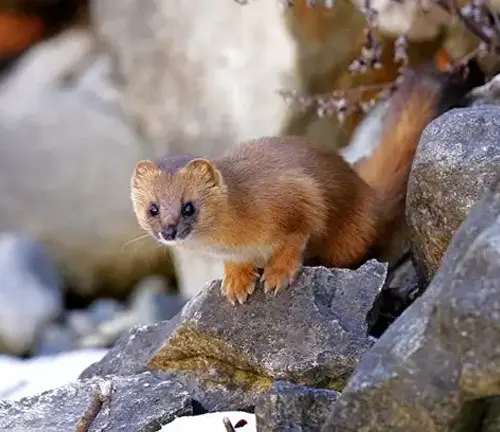

Mountain Weasel
(Mustela altaica)
Inhabiting mountainous regions of Central and East Asia, the Mountain Weasel is larger than the Least Weasel and has a distinct preference for alpine habitats.
Long-tailed Weasel
(Mustela frenata)
Native to North and Central America, the Long-tailed Weasel is larger than the Least Weasel and is characterized by its long, slender body and distinctive black-tipped tail.

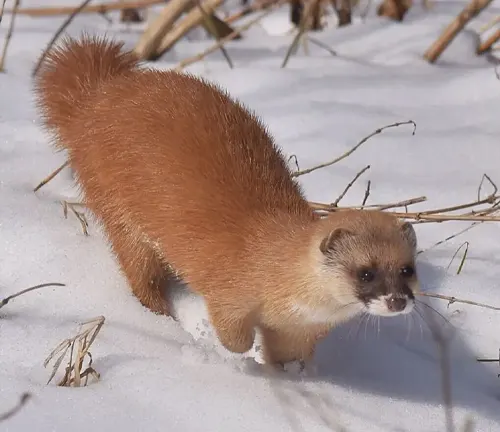
Japanese Weasel
(Mustela itatsi)
Endemic to Japan, this species closely resembles the Least Weasel but has a slightly larger size and broader skull.
Indonesian Mountain Weasel
(Mustela lutreolina)
Found in Indonesia, particularly on the islands of Java and Sumatra, this species inhabits montane forests and has a darker coat compared to the Least Weasel.
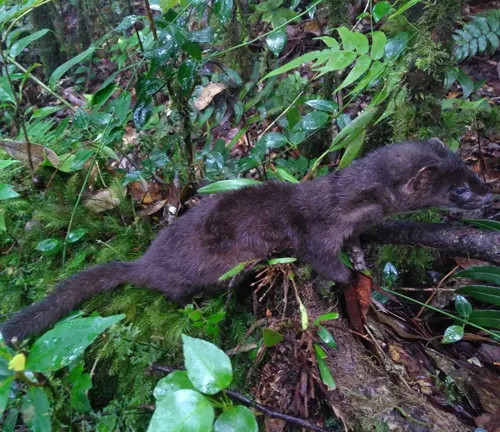
Frequently Asked Questions (FAQs)
- What is a least weasel and what does it look like?
A least weasel (Mustela nivalis) is a small carnivorous mammal belonging to the mustelid family. It typically measures 7 to 8 inches in length with an additional 2 to 3 inches added by its tail. Least weasels have a slender body, short legs, and a pointed snout. They are known for their agile and swift movements, which allow them to navigate through narrow spaces and pursue prey effectively. Their fur is typically brown with a white underside, although it may change to a pure white coloration in winter, providing camouflage in snowy environments. - Where do least weasels live?
Least weasels are found across a wide range of habitats, including grasslands, woodlands, marshes, and even urban areas. They have a broad distribution spanning Europe, Asia, and North America, with populations inhabiting diverse ecosystems from lowland regions to mountainous areas. - What do least weasels eat?
Least weasels are carnivorous predators that primarily feed on small mammals such as voles, mice, shrews, and occasionally birds and insects. They are opportunistic hunters and will consume whatever prey is readily available in their environment. - How do least weasels hunt?
Least weasels are skilled hunters that employ various techniques to capture their prey. They use their keen senses of sight, hearing, and smell to detect prey, then employ stalking, pouncing, and chasing techniques to catch them. Their slender bodies and agile movements allow them to navigate through burrows and crevices in pursuit of prey. - Do least weasels hibernate?
No, least weasels do not hibernate. They remain active throughout the year, even in cold climates, relying on their fur and hunting skills to survive during the winter months. - How do least weasels reproduce?
Least weasels reproduce through sexual reproduction. Mating typically occurs in the spring, after which the female gives birth to a litter of 4 to 6 kits following a gestation period of around 35 days. The young are born blind and helpless and are nursed by their mother until they are old enough to venture out on their own. - What are the predators of least weasels?
Predators of least weasels include larger carnivores such as foxes, birds of prey, and domestic cats. However, their small size and elusive nature help them avoid predation to some extent. - Are least weasels beneficial to the ecosystem?
Yes, least weasels play a crucial role in controlling rodent populations, which helps maintain the balance of ecosystems. By preying on small mammals, they help regulate prey populations and prevent overpopulation, which can have detrimental effects on plant communities and other wildlife. - Can least weasels be kept as pets?
Least weasels are wild animals and are not suitable for domestication or as pets. They have specific dietary and environmental needs that cannot be met in a home setting, and attempting to keep them as pets is illegal in many places. - Are least weasels protected by conservation laws?
Conservation laws regarding least weasels vary depending on their location and local regulations. In some regions, they may be protected under wildlife conservation laws due to their small population size or habitat loss. However, in other areas, they may not have specific protections in place. - How fast can least weasels run?
Least weasels are known for their agility and speed. While exact speeds can vary, they are capable of running at relatively high speeds, especially when pursuing prey or evading predators. - Do least weasels exhibit any social behaviors?
Least weasels are primarily solitary animals and do not exhibit complex social behaviors. However, during the breeding season, males may engage in aggressive interactions to establish dominance and compete for mates. Otherwise, they are typically solitary hunters, only coming together for mating purposes.


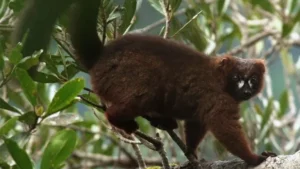



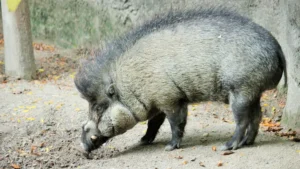
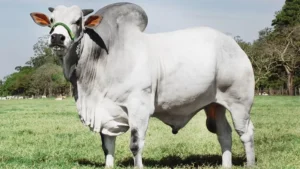






Leave your comment